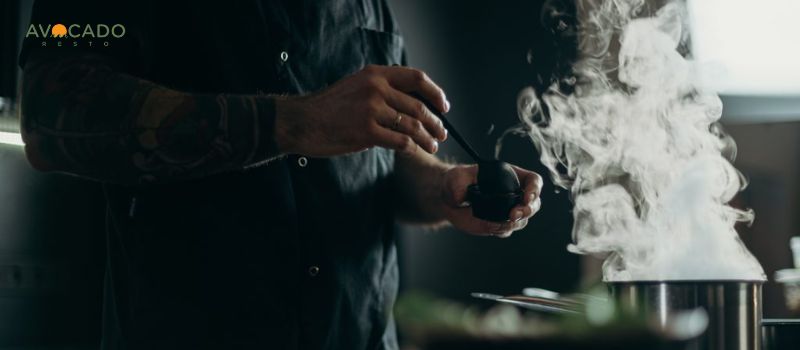In Bali’s vibrant culinary scene, where fresh tropical produce and traditional cooking techniques reign supreme, understanding how cooking methods impact nutrient retention is key to creating healthful, flavorful meals.
From steaming vibrant greens to grilling tempeh over coconut husks, the way you prepare food can significantly influence its nutritional value.
In a tropical climate like Bali’s, where nutrient-rich ingredients such as sweet potatoes, spinach, and jackfruit abound, choosing the right cooking method ensures you maximize their health benefits.
This article explores how different cooking techniques affect nutrient retention, with detailed insights into Balinese practices and tips for optimizing nutrition, especially in the context of West Bali’s sustainable food culture.
The Science of Nutrient Retention
Nutrients in food vitamins, minerals, antioxidants, and phytonutrients are sensitive to heat, water, oxygen, and light, all of which are influenced by cooking methods.
Water-soluble vitamins like vitamin C and B vitamins are particularly vulnerable to high temperatures and prolonged exposure to water, while fat-soluble vitamins (A, D, E, K) and minerals like potassium and magnesium are more stable but can still degrade under harsh conditions.
Cooking can also enhance nutrient bioavailability, making some compounds, like antioxidants in certain vegetables, easier for the body to absorb.
In Balinese cuisine, where dishes like sayur urab (mixed vegetable salad) and pepes ikan (fish in banana leaves) showcase fresh ingredients, the choice of cooking method is crucial for preserving their nutritional potency.
Common Cooking Methods and Their Impact
Different cooking techniques, prevalent in Balinese kitchens, affect nutrients in unique ways. Here’s a detailed breakdown of the most common methods and their effects:
Boiling
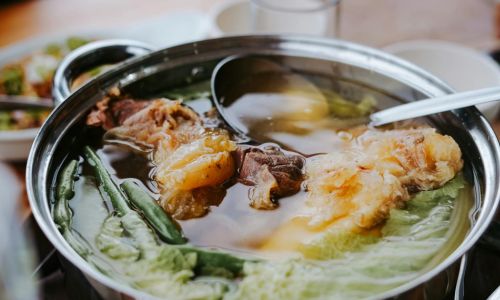
Boiling, a popular method in Bali for dishes like sayur lodeh (vegetable curry in coconut milk), involves submerging food in water at 100°C (212°F).
This technique softens tough vegetables like cassava, taro, or green beans, making them easier to digest and infusing them with flavors from spices like turmeric and galangal.
However, boiling can cause significant nutrient loss, especially for water-soluble vitamins, as they leach into the cooking water.
For example, greens like water spinach (kangkung) lose some vitamin C and folate when boiled too long, diminishing their vibrant green color and nutritional value.
Tips for Nutrient Retention:
- Use minimal water, just enough to cover ingredients, to reduce nutrient leaching. In Balinese kitchens, cooks often use a small pot to keep water volume low.
- Save the cooking water for broths or sauces, a common practice in Balinese soups like soto ayam, to repurpose nutrients lost during boiling.
- Boil briefly 5-7 minutes for greens or 10-15 minutes for roots to preserve texture and vitamins. Test for doneness to avoid overcooking.
Steaming
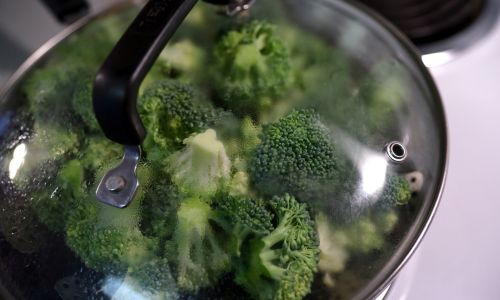
Steaming, a cornerstone of Balinese pepes (food wrapped in banana leaves), uses hot vapor to cook food without direct water contact, making it one of the best methods for nutrient retention.
This technique is ideal for delicate ingredients like mushrooms, fish, or tofu, preserving their natural flavors and vibrant colors.
In West Bali, pepes jamur (mushroom parcels) are steamed in banana leaves with bumbu spices, locking in moisture and nutrients while infusing aromatic notes of lemongrass and kaffir lime.
Tips for Nutrient Retention:
- Steam at low to medium heat (around 80-90°C/176-194°F) to protect heat-sensitive vitamins like vitamin C in greens.
- Use banana leaves, as in Balinese tradition, to wrap ingredients, creating a sealed environment that traps steam and enhances flavor while retaining nutrients.
- Keep steaming times short 5-10 minutes for greens or 15-20 minutes for fish—to maintain texture and nutritional value.
Grilling

Grilling, widely used in Bali for sate lilit (minced fish satay) or tempeh, involves cooking over direct heat, often from charcoal or coconut husks.
This method imparts a smoky, caramelized flavor, especially when using coconut husks, a traditional fuel in West Bali’s warungs.
Grilling enhances the taste of ingredients like tempeh or corn, but high heat can degrade vitamins like C and B1 if not managed carefully. The technique also concentrates flavors in vegetables like eggplants, making them more palatable.
Tips for Nutrient Retention:
- Grill at moderate temperatures (150-200°C/302-392°F) to avoid charring, which can destroy nutrients and create bitter flavors.
- Marinate ingredients with Balinese bumbu a paste of turmeric, lemongrass, and garlic—to add protective antioxidants and enhance flavor, as seen in ikan bakar (grilled fish).
- Grill just until done 5-7 minutes for tempeh or vegetables—to preserve texture and nutrients, checking for a golden exterior.
Frying
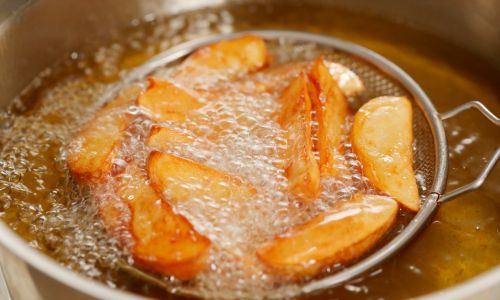
Frying, common for dishes like tempeh goreng (fried tempeh) or pisang goreng (fried bananas), uses hot oil, typically coconut or palm oil in Bali, to cook food.
This method creates a crispy texture and rich flavor, locking in some fat-soluble vitamins like A and E found in vegetables or roots.
However, excessive heat or oil absorption can reduce nutrient content and add unnecessary calories. In Balinese kitchens, shallow-frying is preferred to maintain the integrity of ingredients like tofu or sweet potatoes.
Tips for Nutrient Retention:
- Use shallow-frying with minimal oil (1-2 tablespoons), as practiced in Balinese warungs, to reduce nutrient loss and calorie intake.
- Choose coconut oil, a staple in Bali, for its high smoke point (175°C/350°F) and stability, preventing oxidation that can degrade nutrients.
- Fry at moderate temperatures (150-160°C/302-320°F) for short durations 3-5 minutes for tempeh to preserve vitamins and avoid oil saturation.
Raw Preparation
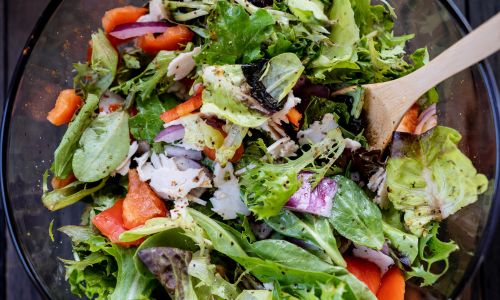
Raw foods, featured in Balinese gado-gado (vegetable salad with peanut sauce) or lawar (raw vegetable mix), retain maximum nutrients since they’re not exposed to heat or water.
Salads with papaya, mango, or fern tips preserve vitamin C and enzymes, offering a fresh, vibrant addition to meals. In Bali, raw preparations are often paired with sambal or peanut sauce to enhance flavor.
However, some nutrients, like beta-carotene in carrots, are less bioavailable raw, and digestion may be harder for some people.
Tips for Nutrient Retention:
- Source fresh, high-quality produce from Bali’s markets, like those in Tabanan, to ensure peak nutrient content and flavor.
- Pair raw foods with healthy fats, such as peanut sauce or coconut oil dressings, to boost absorption of fat-soluble vitamins, a common Balinese practice.
- Wash ingredients thoroughly with clean water to remove contaminants, especially in Bali’s tropical climate where bacteria thrive.
Balinese Cooking Techniques and Nutrient Preservation
Balinese cuisine naturally optimizes nutrient retention through unique methods rooted in tradition. The pepes technique, where ingredients like fish, mushrooms, or tofu are wrapped in banana leaves and steamed or grilled, seals in moisture and nutrients while infusing flavors from spices like galangal, lemongrass, and kaffir lime.
In West Bali, this method is popular in coastal villages, preserving the protein and antioxidants in seafood or vegetables. Similarly, bumbu spice pastes, made with fresh turmeric, ginger, and garlic, add flavor and protective compounds that enhance nutrient stability during cooking, a practice central to dishes like ayam betutu.
Fermentation, another Balinese staple, boosts nutrient bioavailability. Tempeh, fermented with Rhizopus mold, increases the absorption of iron and protein, making it a nutritional powerhouse in dishes like tempeh manis.
In villages near Pemuteran, artisans wrap tempeh in banana leaves during fermentation, enhancing its flavor and probiotic content, a practical solution for preserving food in Bali’s humid climate.
Practical Tips for Maximizing Nutrient Retention
To make the most of Bali’s nutrient-rich ingredients, consider these strategies inspired by local practices:
- Choose Fresh, Local Produce: Shop at markets in West Bali or Ubud for just-harvested greens, roots, and fruits to ensure peak nutrient content.
- Minimize Cooking Time: Cook vegetables like kangkung or cassava leaves briefly—under 10 minutes—to preserve heat-sensitive vitamins.
- Use Traditional Methods: Adopt Balinese techniques like steaming in banana leaves or grinding fresh bumbu to enhance flavor and nutrition.
- Combine Methods: Pair raw and cooked elements, as in gado-gado, to balance nutrient retention and bioavailability.
- Store Properly: Keep produce in cool, shaded areas or refrigerate to prevent nutrient degradation before cooking, especially in Bali’s heat.
Nutrient Retention in West Bali’s Culinary Scene
West Bali’s sustainable food culture, centered around the West Bali National Park and coastal villages like Pemuteran, emphasizes fresh, minimally processed ingredients.
Local warungs and eco-lodges serve dishes like sayur urab or pepes jamur, using steaming and grilling to retain nutrients while showcasing the region’s produce.
Cafes in the area often incorporate raw or lightly cooked vegetables, such as fern tips or papaya, into salads, ensuring maximum vitamin retention.
This focus on traditional methods aligns with Bali’s ethos of harmony with nature, making West Bali an ideal place to explore healthful cooking.
The way you cook profoundly impacts the nutritional value of your meals, and Bali’s culinary traditions offer a blueprint for balancing flavor and health.
By choosing methods like steaming, grilling with care, or incorporating raw elements, you can preserve the vibrant nutrients in the island’s produce.
For a taste of this nutrient-focused approach, visit AVOCADO RESTO in West Bali, where fresh, plant-based dishes crafted with local ingredients celebrate the island’s wholesome flavors and sustainable spirit.
